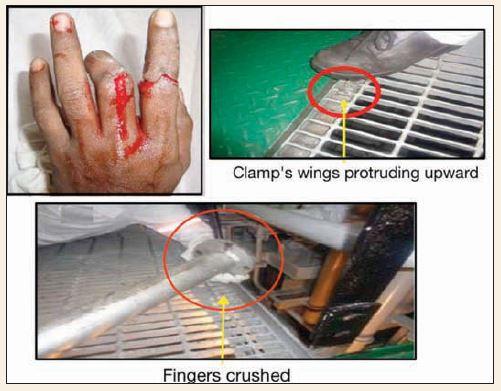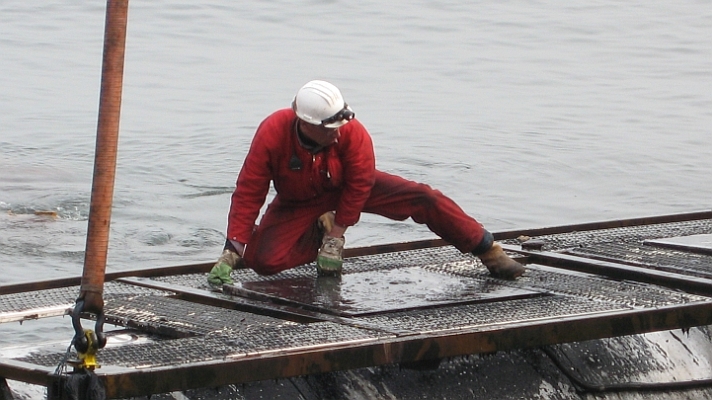If body parts are to be close to machinery that can potentially move during any maintenance or repair task, lock out-tag out procedures should be employed. Failing to do so, recently caused a crew member to get his fingers crushed during a greasing job.
Lock out-tag out (LOTO) refers to practices and procedures to safeguard employees from the unexpected energisation or startup of machinery and equipment. This requires, in part, that a designated individual turns off and disconnects the machinery or equipment from its energy source(s) before performing service or maintenance and that the authorised employee(s) either lock or tag the energy-isolating device(s) to prevent the release of hazardous energy and take steps to verify that the energy has been isolated effectively.
If the potential exists for the release or reaccumulation of stored energy, the employer must ensure that the employee(s) take steps to prevent injury that may result from the release of the stored energy.
Lockout devices hold energy-isolation devices in a safe or "off" position. They provide protection by preventing machines or equipment from becoming energised because they are positive restraints that no one can remove without a key or other unlocking mechanism, or through extraordinary means, such as bolt cutters.
Tag out devices, by contrast, are prominent warning devices that an authorised employee fastens to energy-isolating devices to warn employees not to reenergise the machine while he or she services or maintains it. Tag out devices are easier to remove and, by themselves, provide employees with less protection than lock out devices.
A recent Mars Report describes an incident which occurred when a crew member removed PPE while greasing the mooring winches and failed to apply LOTO procedures as well as the lessons to be learned from it.
Greasing Job after Toolbox Meeting
While at sea in good weather conditions, two crew members were detailed to grease the mooring winches, a job they had done in the past. Before starting the work, a tool box meeting was carried out and a job plan agreed. The greasing was to be carried out with the winch in slow running mode. After greasing, the winch control lever was put to neutral and they began to wipe away the excess grease.
Crew Member Takes off Gloves
Although crew member A had started the job with gloves on, the gloves became soiled while cleaning the excess grease and were difficult to work with, so he removed them. He continued cleaning the excess grease without gloves.
Winch Lever Safety Locking Mechanism Not Engaged
The winch lever safety locking mechanism had not been engaged and at one point, crew member A accidentally touched the winch control lever with his back, which caused the winch to move in the heave-up direction. His hand got stuck in the winch gear engaging assembly and he shouted for help. Crew member B immediately stopped the winch and, after checking with crew member A, slowly moved the winch in the opposite direction to clear his hand from winch.

Lessons Learned
- Tool box meetings are serious affairs and should account for all known risks and reiterate PPE use. In this accident, it is hard to imagine that the tool box meeting accomplished this end.
- If machinery is running, as in the greasing phase, at no time should parts of your body be close to the moving parts of the machinery.
- If body parts are to be close to machinery that can potentially move, as in the excess grease cleaning phase of this report, LOTO procedures should be employed. In this case, the power supply to the winch should have been locked out before the grease clearing began.
Mars Reports
This is one of the April Mars Reports, originally published as Mars 201928, that are part of Report Number 318. A selection of this Report has also been published in SWZ|Maritime’s May issue.
Submit a Mars Report
More reports are needed to keep the scheme interesting and informative. All reports are read only by the Mars coordinator and are treated in the strictest confidence. To submit a report, please use the Mars report form and send it to mars@nautinst.org.








